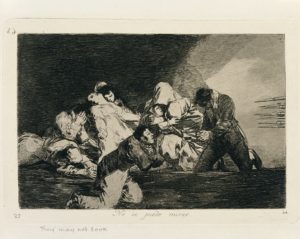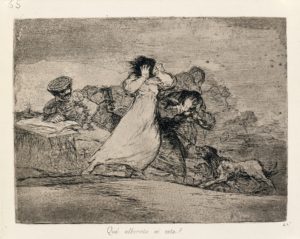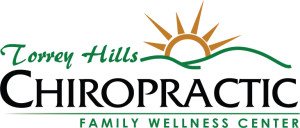The Timken Museum of Art Presents Witness to War

Francisco de Goya, One can’t look (Plate 26 from The Disasters of War), ca. 1810, published 1863, etching, burnished lavis, drypoint, and burin, Print Collection, University of San Diego
The Timken Museum of Art Presents Witness to War: A Powerfully Moving, Thought-Provoking and Evocative Exhibit Featuring the Works of Jacques Callot, Francisco Goya and George Bellows.
‘Witness to War’ depicts searing images from the 17th to 20th centuries portraying the ‘Thirty Years’ War,’ ‘Napoleonic Wars’ and ‘World War I’: January 27-May 28, 2017.
The Timken Museum of Art takes a courageous stance as it begins 2017 with a powerfully evocative exhibit: ‘Witness to War: Callot, Goya, Bellows’ depicting searing and historic images from the 17th to the 20th centuries that includes the Thirty Years’ War, Napoleonic Wars and World War I. The Timken exhibit runs January 27 through May 28. “This dramatic and compelling collection, presented in partnership with the University San Diego and the San Diego Museum of Art, includes more than 100 works of art comprised of etchings and lithographs,” states Megan Pogue, Timken Executive Director, “We will be cataloguing the brutality and fatal consequences of war in a stark, confrontational and unflinching manner.”
The Meaning of it All
Widely appreciated as powerful creative statements about the inhumanity of war, and rarely seen as a group, this exhibition includes The Miseries of War, a series of 18 etchings by French Baroque artist Jacques Callot, which recalls the actions of the army that Cardinal Richelieu sent in 1633 to occupy Callot’s native Lorraine, annexing it to France. The exhibition also includes the entire series of the Disasters of War, 80 prints by Francisco Goya, which stand out as one of the most famous visual protests against violence in all of art history. Specifically, The Disasters of War documents the 1808 Dos de Mayo Uprising, the subsequent Peninsula War, and the setbacks to liberal causes following the restoration of the Bourbon monarchy in Spain. Finally, the Witness to War includes 11 of the 15 original lithographs from the Tragedies of War, a series of made by the American artist, George W. Bellows depicting the atrocities surrounding the invasion of Belgium during World War I.
At its heart, Witness to War offers three separate interpretations of the brutal violence that is the essence of war itself. While the subject matter of each etching and lithograph in the exhibition can be both difficult and compelling, the many tragic scenes of suffering elicit empathy and compassion for the victims. Witness to War underscores the way that art speaks in different voices to different generations and transcends the particularities, uniqueness and similarities of each war. According to Derrick R. Cartwright, Curatorial Director of the Timken, “this exhibition provides a rare opportunity to survey some of the most unforgettable and original graphic works ever produced. While the content is difficult, the issues raised by these three very different artists are timeless.”
Guest speakers, lectures planned
Soon-to-be-announced, the Timken Museum of Art will present a series of informative and enlightening programs featuring art scholars and guest lecturers in conjunction with Witness to War. Simultaneous with the Timken’s presentation, a related exhibit—British Modern Prints from the British Museum: From the Great War to the Grosvenor School—curated by Erin Sullivan-Maynes, Hoehn Curatorial Fellow for Prints, will be on view at the University of San Diego’s (USD) Robert and Karen Hoehn Family Galleries from February 10 to May 19, 2017. Cartwright, who is also an art history professor at USD is also planning another collaboration with Timken longstanding partners, Combatarts, a local Veterans’ art group. Combatarts will be responsible for a site-specific installation at the University of San Diego’s new Humanities Center Gallery in February. A series of programs and lectures in conjunction with each of these related war-themed exhibitions will also be available, free of charge, at USD throughout the spring. Each of these collaborations further enhances the Timken’s own bold programming efforts.
Artists and insight
Jacques Callot (French; 1592 – 1635): The Miseries of War published in 1633, is Callot’s best-known work and has been called the first “anti-war statement” in European art. The Miseries of War depict the destruction unleashed on civilians during the Thirty Years’ War. No specific campaign is depicted, but the set as a whole evokes the actions of the army sent in 1633 to occupy Callot’s native Lorraine, before annexing it to France.

Francisco de Goya, What is this hubbub? (Plate 65 from The Disasters of War), ca. 1810, published 1863, etching, burnished aquatint and lavis, burin, and burnisher, Print Collection, University of San Diego
Francisco Goya (Spanish; 1746-1828): Disasters of War (1810-1820) is comprised of 80 images that were essentially unseen during Goya’s lifetime. This posthumously published series depicts the violence of the Napoleonic occupation of Spain during the Peninsular War. Goya rejected the heroics of most previous Spanish war art to show the effect of conflict on individuals and abandoned color in favor of a more direct truth he found in black and white etchings.
George W. Bellows (American; 1882-1925): It is not clear why Bellows chose to depict the atrocities in Belgium four years after the fact, but in a preface to an exhibition of some of the lithographs shown in November 1918, he wrote: “In presenting these pictures of the tragedies of war, I wish to disclaim any intention of attacking a race or a people. Guilt is personal, not racial. Against that guilty clique and all its tools, who let loose upon innocence every diabolical device and insane instinct, my hatred goes forth, together with my profound reverence for the victims.”
Please note: This exhibition contains numerous graphic depictions of war and its effects. It may not be appropriate for all audiences, therefore. We recommend that visitors with concerns about such content preview the exhibition before entering with small children or sensitive adults.
Free Admission to the Timken Museum of Art, Balboa Park
The Timken Museum of Art, which offers free admission to the public, is known among both art experts and frequent visitors alike as the “jewel box” of fine art and is one of the finest small museums in the world. The Timken provides visitors with an accessible and enriching cultural experience and boasts the permanent home of the Putnam Foundation’s significant collection of European Old Masters, 19th century American art and Russian icons. Notable works in the Timken’s collection include: Rembrandt’s Saint Bartholomew, is the only painting by the Dutch master on display in San Diego; Pieter Bruegel the Elder’s Parable of the Sower; John Singleton Copley’s Portrait of Mrs. Thomas Gage; Eastman Johnson’s classic, The Cranberry Harvest: Island of Nantucket; and Jean-Baptiste-Camille Corot’s View of Volterra.
For more information about the Timken Museum of Art please call 619.239.5548 or log onto: www.timkenmuseum.org.










You must be logged in to post a comment Login